 A heatwave upon us we decided on a watery walk shaded by mature hardwoods growing from the fertile soils of the south east. Having boated and hiked both the Barrow and the Suir it was to the last of the three sisters we headed – the Nore.
A heatwave upon us we decided on a watery walk shaded by mature hardwoods growing from the fertile soils of the south east. Having boated and hiked both the Barrow and the Suir it was to the last of the three sisters we headed – the Nore.
Following the meandering river south from Borris in Ossory after its journey from the Devils Bit mountain, we drove through Durrow and Ballyragget to The Weir swimming pool on the northern edge of Kilkenny city. Arriving at dusk it was too late to swim (not for others) and the morning was too chilly (not for others again)so we set off to our trailhead in the Castle Park as more swimmers arrived.
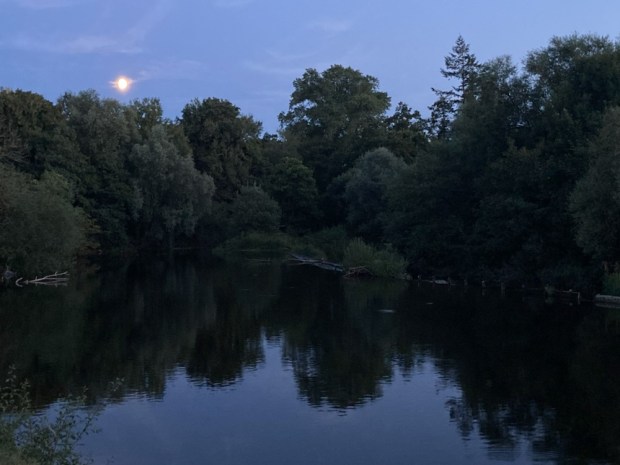
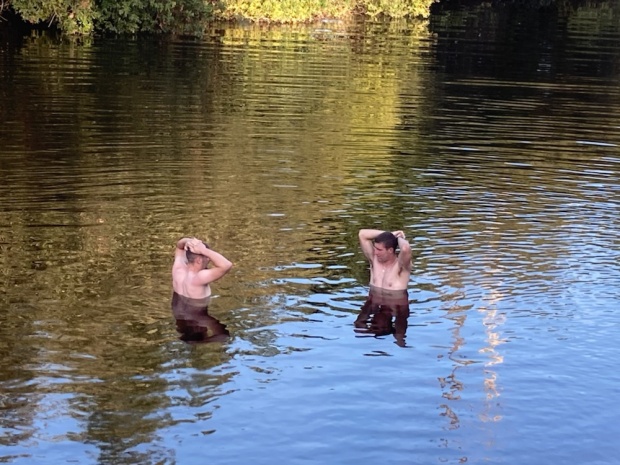
The Nore Valley Way is a three stage, 34km, walk and the middle section is still, after many years, not completed. Kilkenny to Bennetsbridge is 12 km, the gap from there to Thomastown is 11km and Thomastown to Inistioge is another 12km. But still, there are bus and train links to and fro between the stages so it’s possible to break it up or complete both stages in a day.

We started on the tree lined avenues of the Canal Walk in Kilkenny Castle grounds and after a couple of km crossed the river to the east bank on the Ossory bridge.
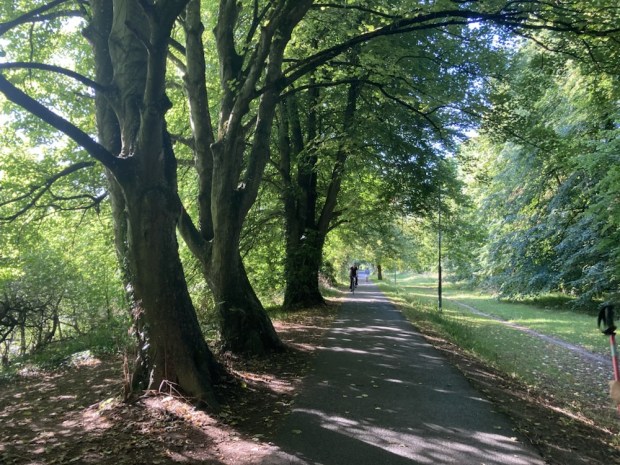
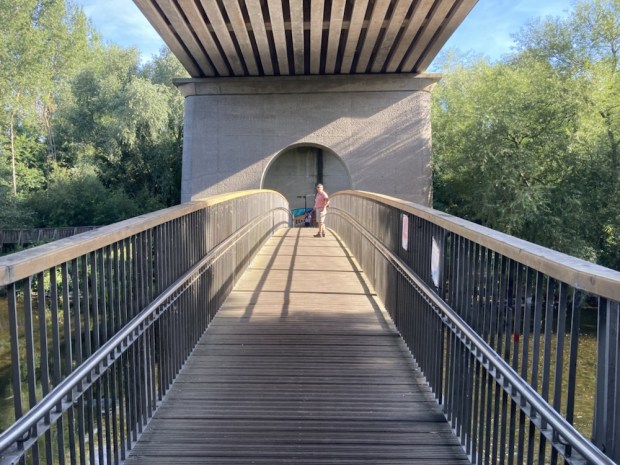
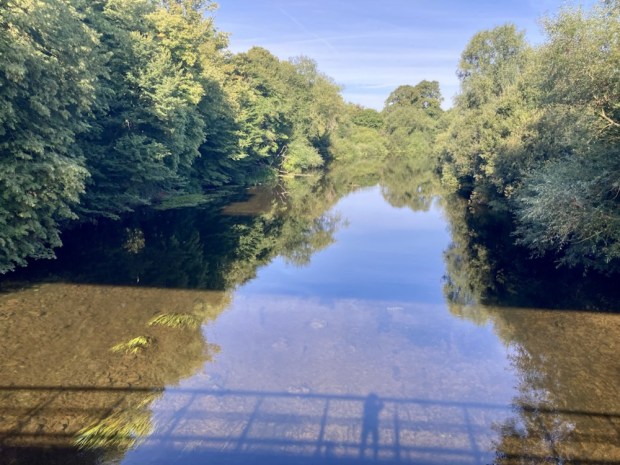
The river was wide, shallow and clear. The long spell without rain had lowered the level considerably and Irish waterways had asked the public to report any signs of overheated and distressed fish. We were kept cool on the shaded path through the trees, refreshed by the gurgling and twinkling of water over shallows.

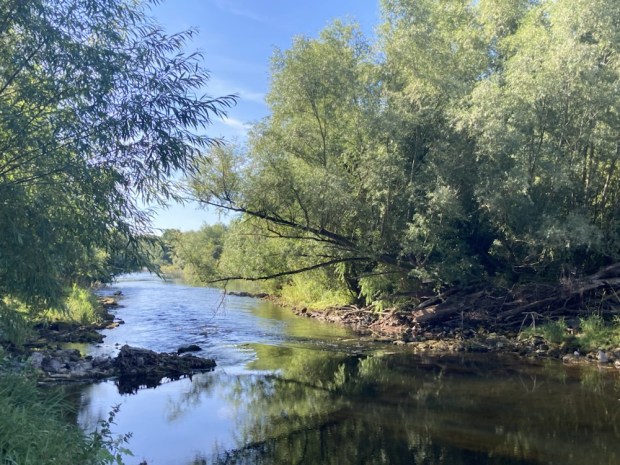
An access issue forced us up onto a road for a little while before crossing a stile into riverside fields again. This walk was characterised by the wide variety of stiles employed- seemingly every type going. We passed Inch sawmills with huge stacks of planked hardwoods, sawn by the power of the water for generations. This river, for hundreds of years has provided the power for woollen, paper, grain and sawmills as well as the water for breweries and irrigation of the fertile land. We passed many, both ruins and fine homes, with a network of mill races and ponds slowly returning to a pre industrial landscape.
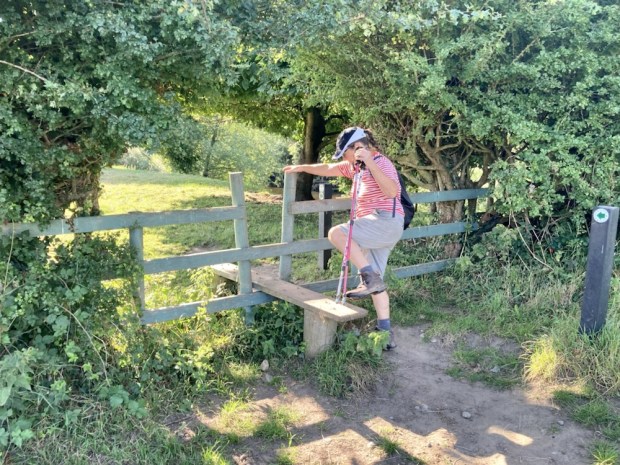





There were areas of quarried stone where the famous Black Marble was worked but now all was quiet and the cobbled track was used solely for recreation. Walkers, fisherfolk and in this weather, wild swimmers. We passed an extravagant and forlorn designer extension in the woods before coming to a swimming spot near the motorway bridge.


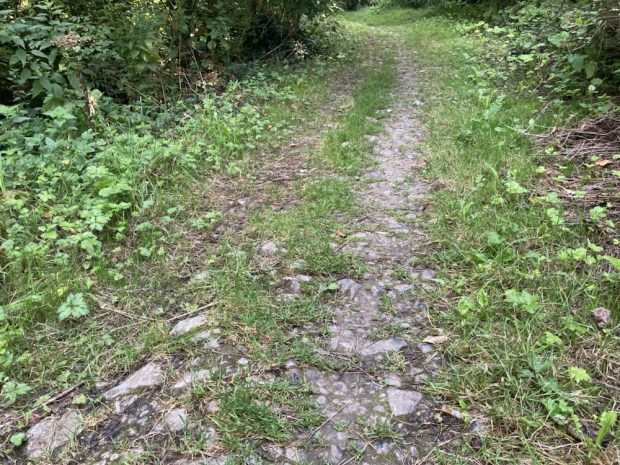
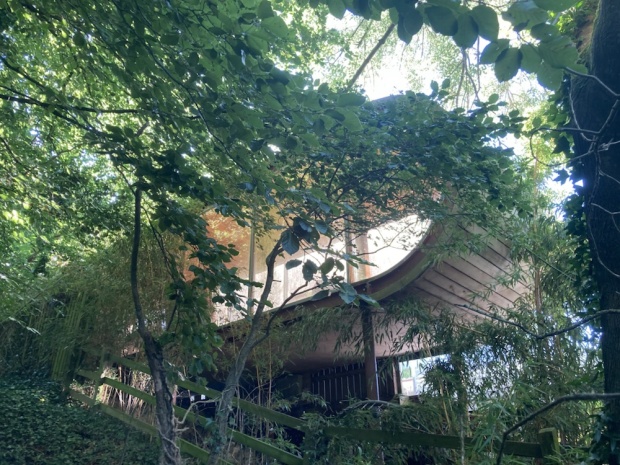
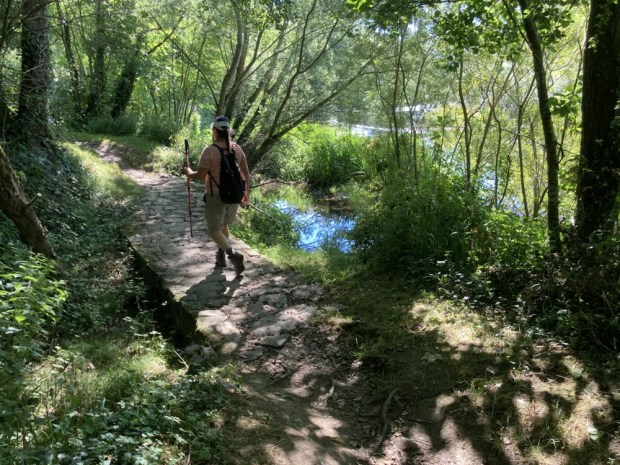
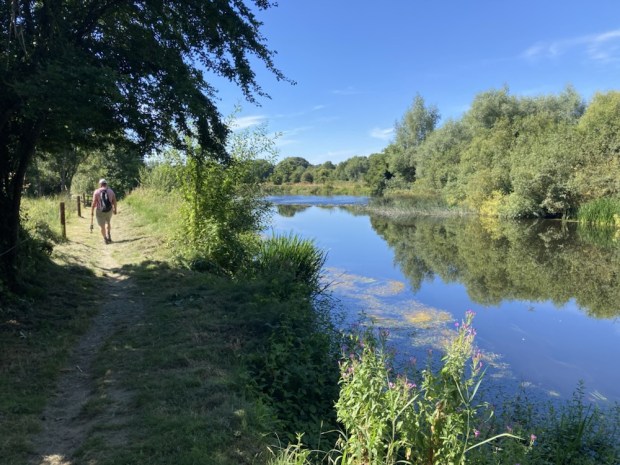


Soon after our cooling swim we came upon a remote horse box coffee shop, unfortunately closed, and then were approaching Bennetsbridge and the old mill complex now housing the Nicolas Mosse pottery totally powered by the water turbine that also feeds into the national Grid.

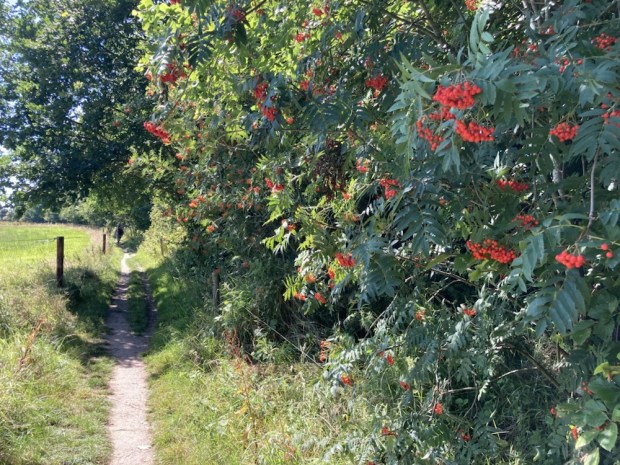
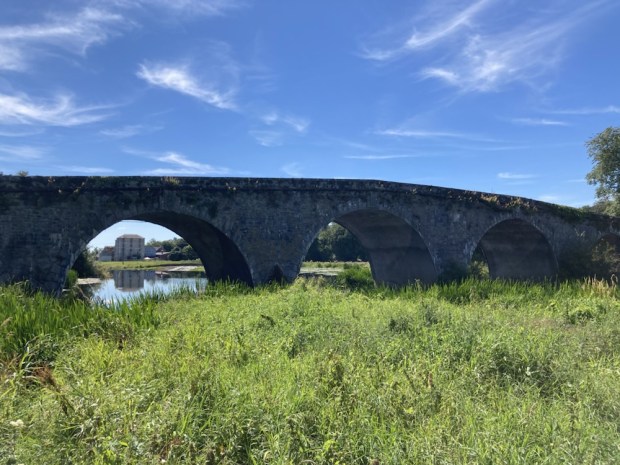

From another mill building and grain silos we caught the bus back to the castle where we explored more of the park and toured some of the arts week exhibitions.



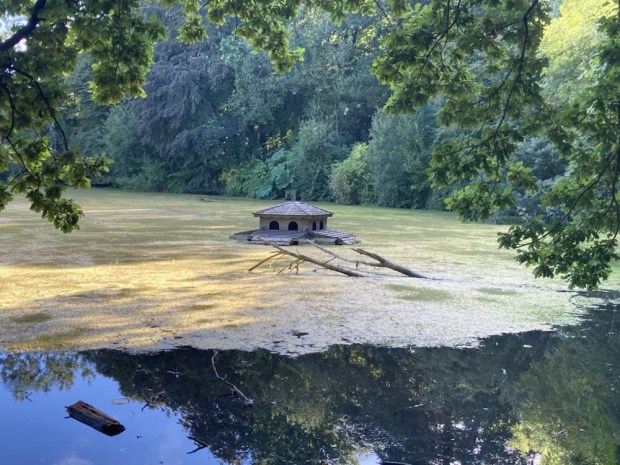
Originally a wooden structure built by Strongbow to control the fording place, in 1195 the stone towers were built, three of which still survive. Home to the Butler family for 600 years, the Marquess of Ormond gave it to the nation in 1976 and it continues to be a very popular place for local and tourists to visit.
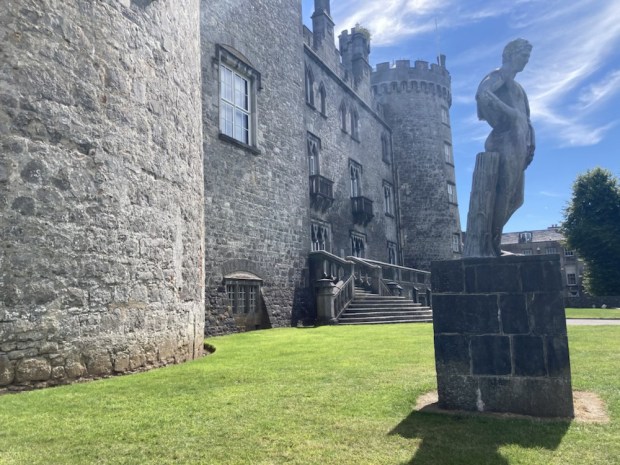
Leaving our overnight camper spot in the riverside park the next morning we drove to Thomastown swimming spot where the glorious sunshine, a gouty toe, a charming village packed with over 30 art exhibitions and a reservation for the night at the nearby Mount Juliet estate were enough to persuade us to leave the next stage walk for a day and kick back a little.

A swim, sunbathe, tour of Creative Arts Festival shows and more repurposed mill buildings and it was time to see how the other half lived up at the Big House that is Mount Juliet. 
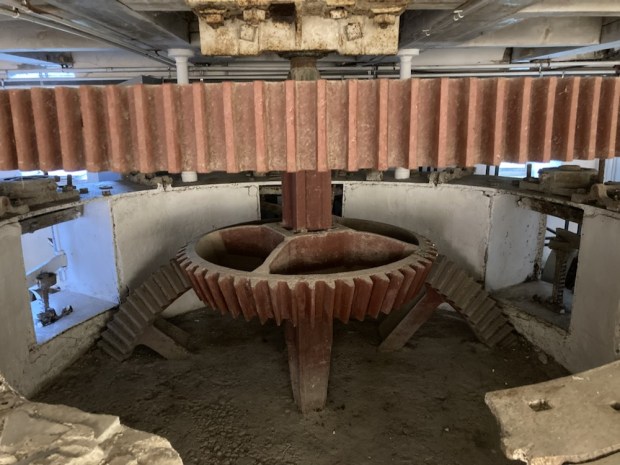

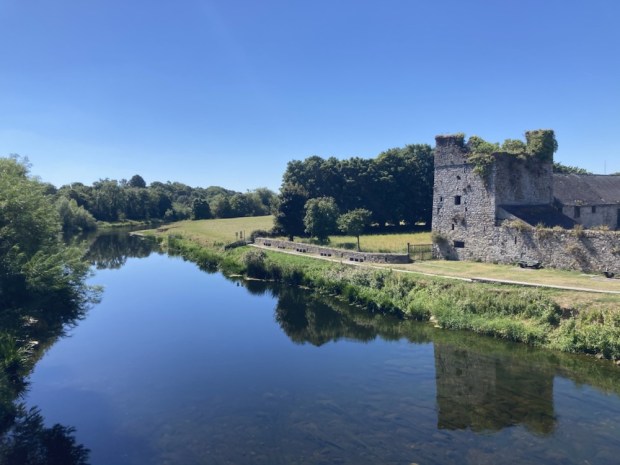
The 500 acres of rolling parkland that the house overlooks from its high ridge include a golf course (of course) , formal gardens, mature oak woodland, man made lakes, the Nore valley and acres of fenced horse paddocks. Riding, fly fishing, archery, falconry – and golf- all go on in this pocket of privilege. We wondered if the delay in completing the Way was due to obstruction by the estate.


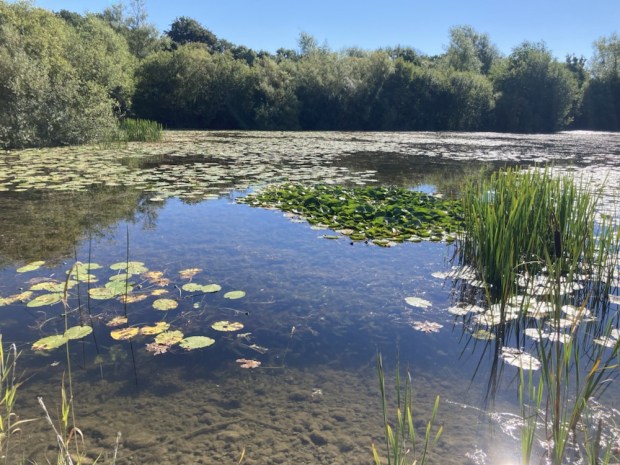
Taking the bus from Thomastown in the morning we set off on the final 11km walking upstream from the pretty village green at Inistioge. Picnickers, canoeists and fishermen were soon left behind and we saw no one else the entire walk.
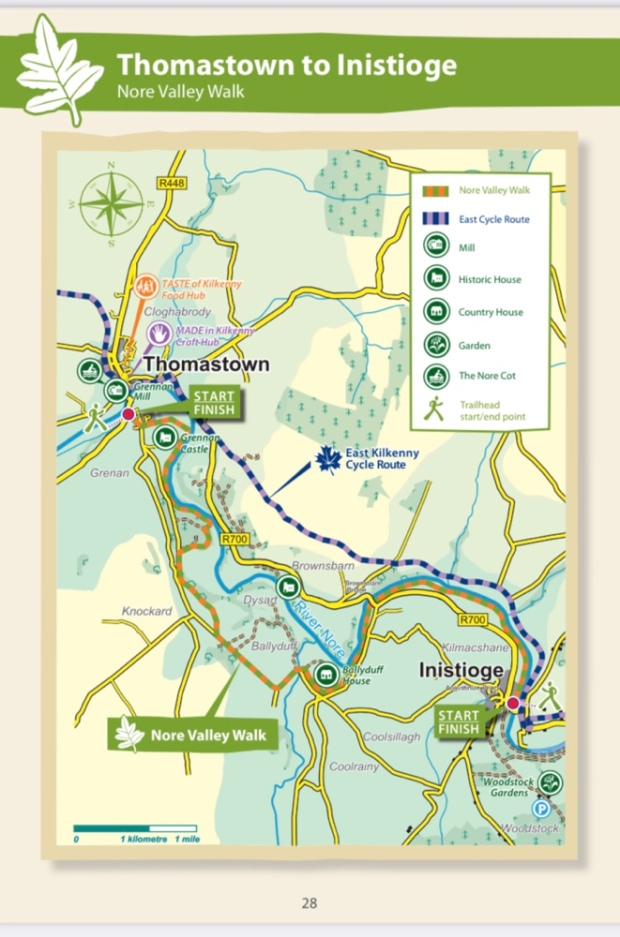
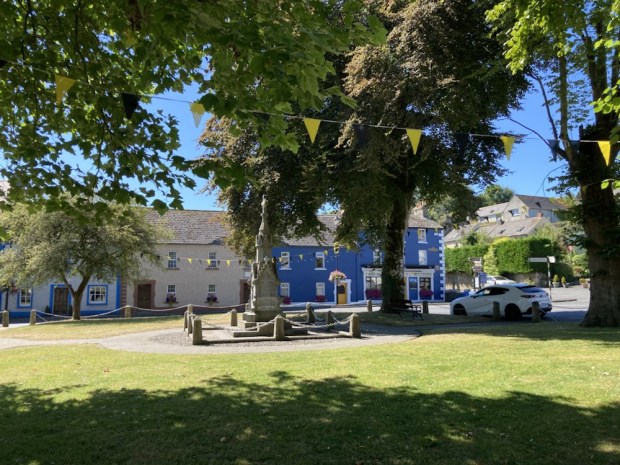

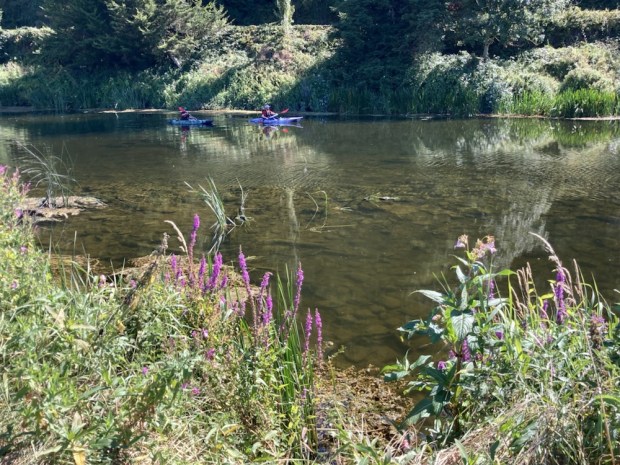
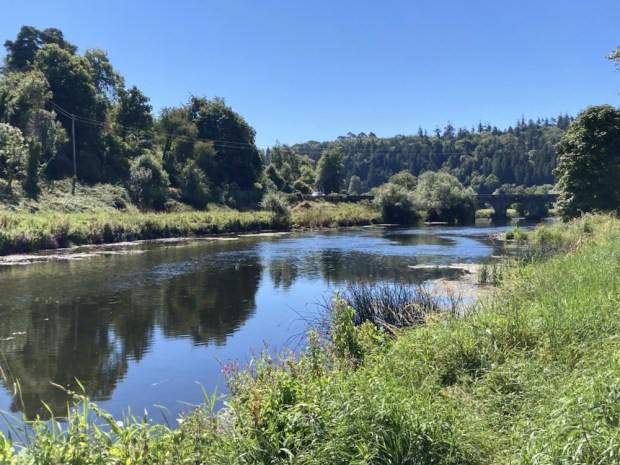

The abundance of fish in the clear waters ensured a lot of herons on watch and I was thrilled to see a florescent kingfisher darting along the bank. Swifts and ducks were plentiful but we didn’t spot an otter unfortunately. Climbing up through the woods around Ballyduff House we had a couple of Kms of backroad walking before we were led down through dappled old coppice to the river again.
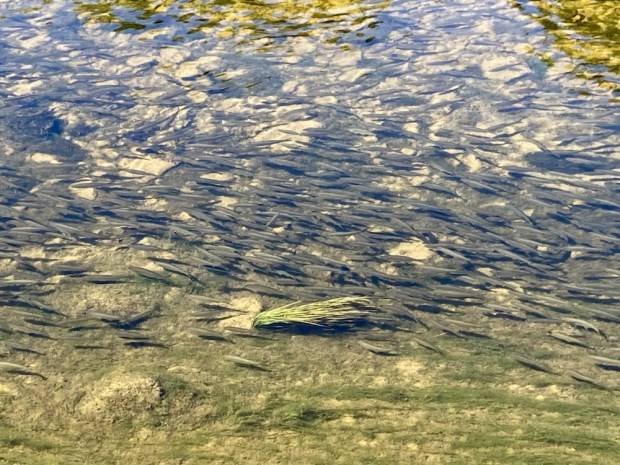
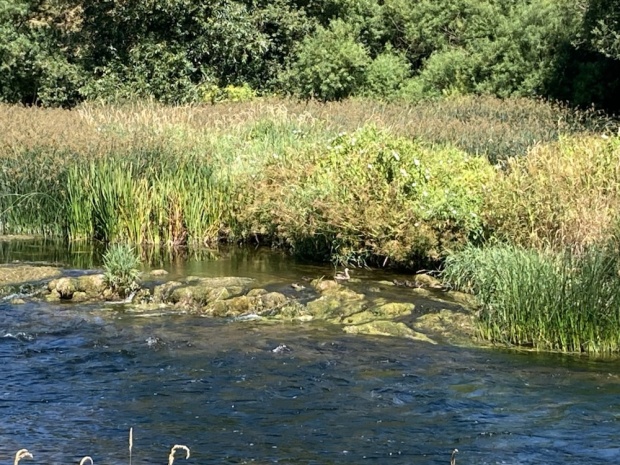
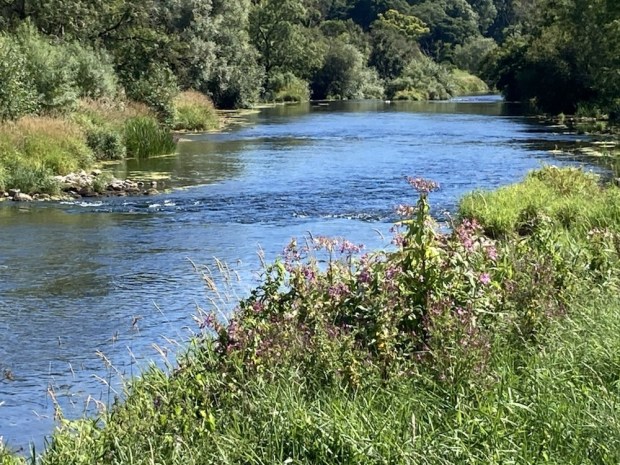
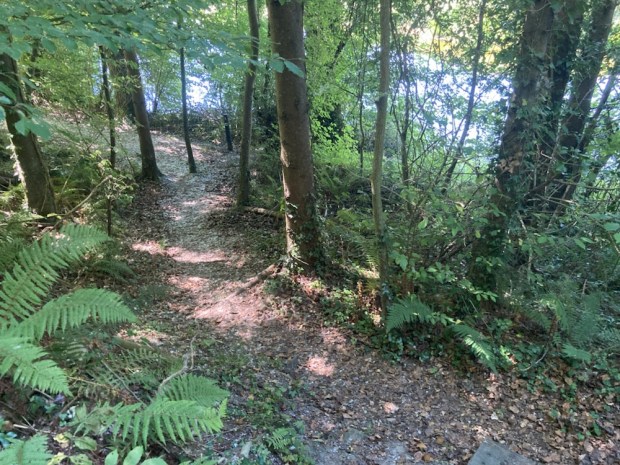



With the temperature reaching record heights we searched unsuccessfully for a good swimming spot as we drove sheep from the shade on the final stretch past a Strongbow tower to finish at the GAA pitch.
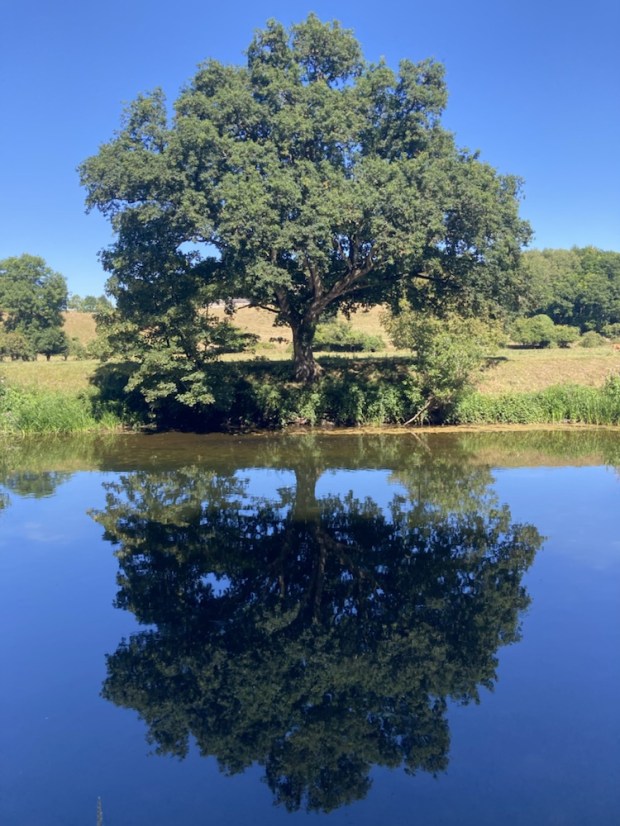
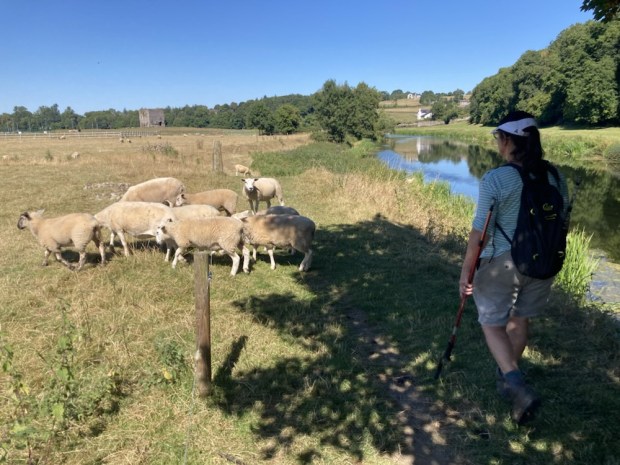

Back to the swimming place to cool off before the drive home happy to have completed the trio of the Sisters river walks.
Another recent waterside walk was back in the Hidden Heartlands, on the banks of the Shannon.
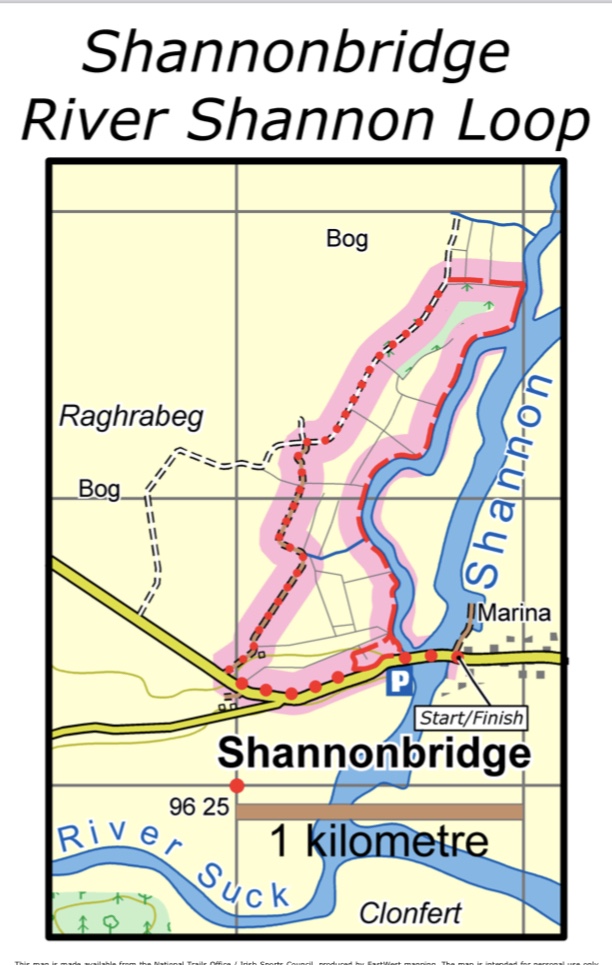
Starting at the River Cafe housed in the early 19th century Napoleonic tower, part of a series of defences against a French invasion that never happened, the 5km loop led us from the 1757 bridge, along the riverbank and back on an old bog road.

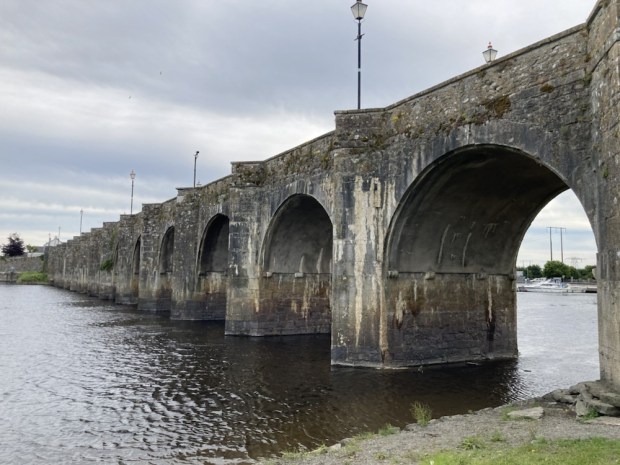


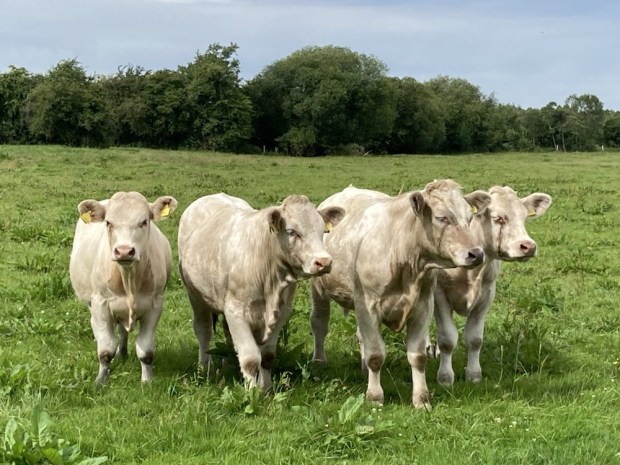

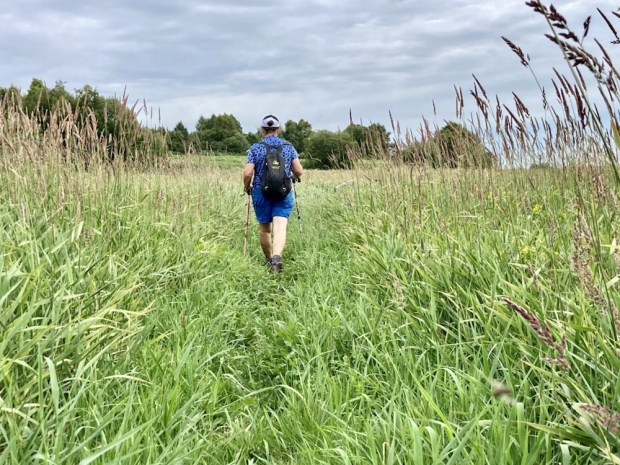
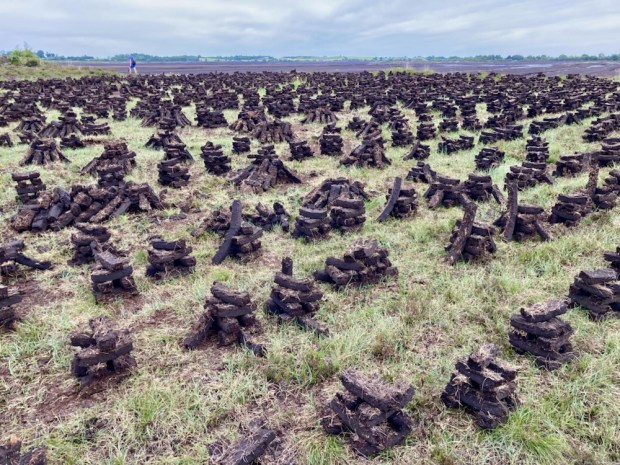
The bog lands of central Ireland are going through a huge change, from Brown to Green as the marketing lingo has branded it. Bord na Mona, in its seismic shift from carbon source to carbon sink, is embarking on a “Just Transition” to renewable energy producer, recycling operator and bog restoration through rewetting. The vast area of Blackwater Bog, down the road from the decommissioned peat power station at Shannonbridge is silent. The once familiar yellow machinery for the vast milling, harrowing, ridging, harvesting and transporting operations are rusting slowly as they become consumed by the Greening.

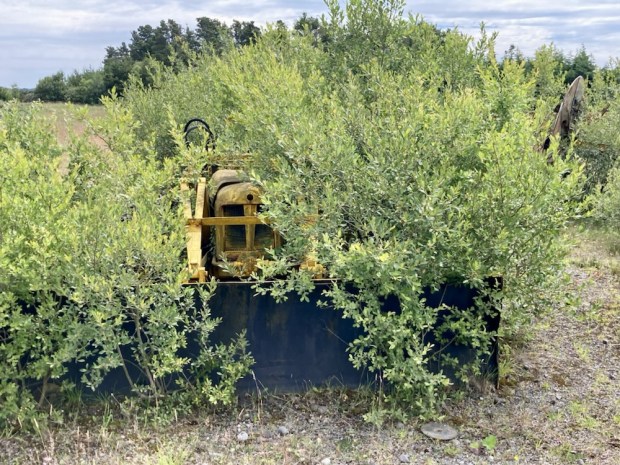

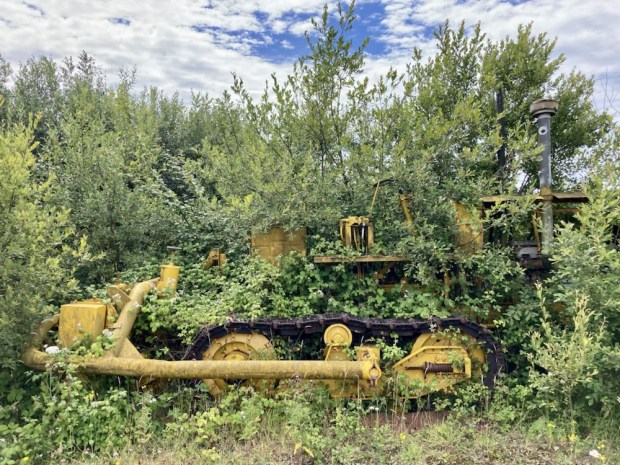
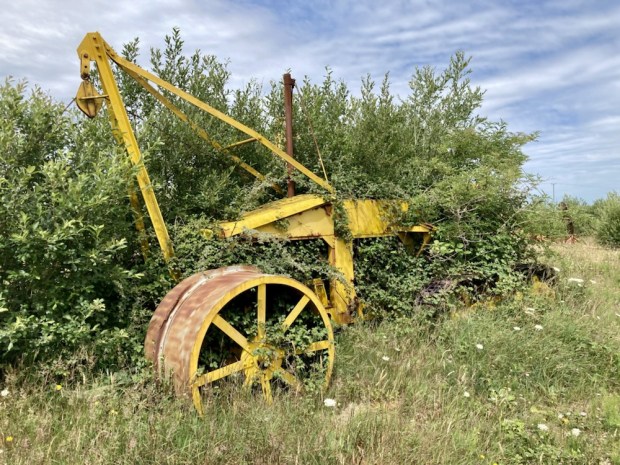

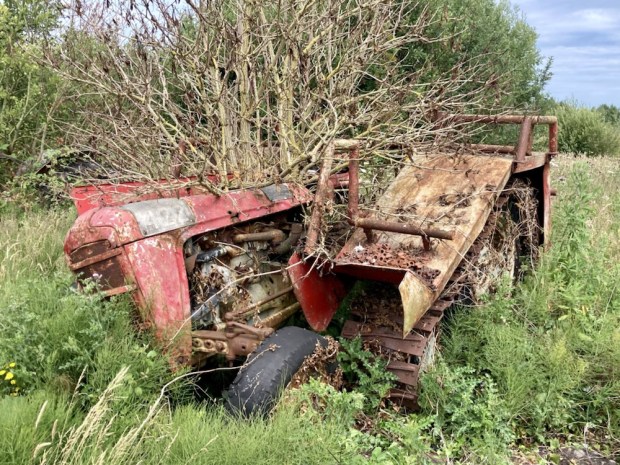



The Irish waterways are a beautiful natural resource, no more than its mountains and coast, and vastly under appreciated. Here’s hoping that in the attempts towards a more sustainable future they are nurtured, promoted and protected.
